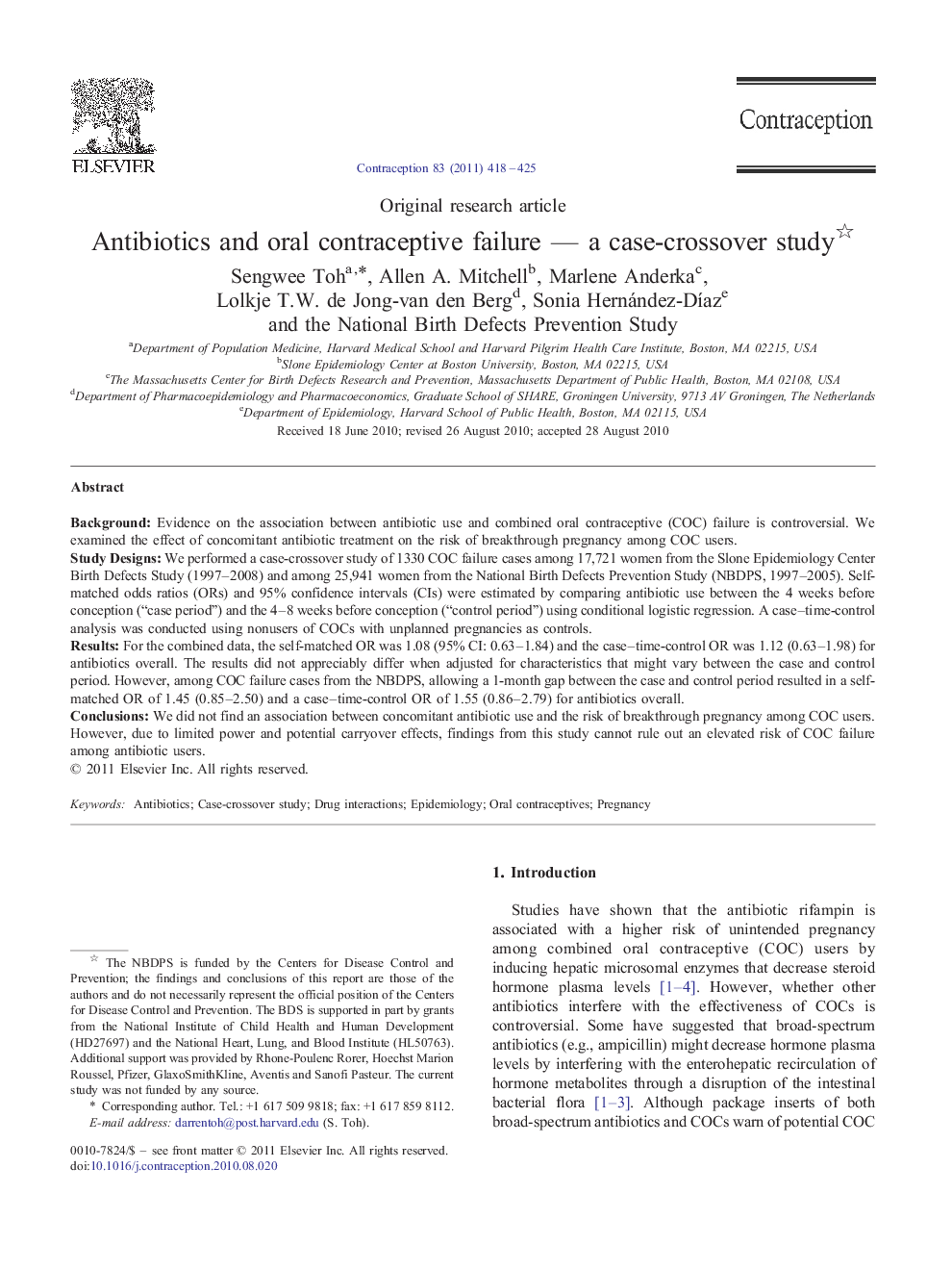| Article ID | Journal | Published Year | Pages | File Type |
|---|---|---|---|---|
| 3914050 | Contraception | 2011 | 8 Pages |
BackgroundEvidence on the association between antibiotic use and combined oral contraceptive (COC) failure is controversial. We examined the effect of concomitant antibiotic treatment on the risk of breakthrough pregnancy among COC users.Study DesignsWe performed a case-crossover study of 1330 COC failure cases among 17,721 women from the Slone Epidemiology Center Birth Defects Study (1997–2008) and among 25,941 women from the National Birth Defects Prevention Study (NBDPS, 1997–2005). Self-matched odds ratios (ORs) and 95% confidence intervals (CIs) were estimated by comparing antibiotic use between the 4 weeks before conception (“case period”) and the 4–8 weeks before conception (“control period”) using conditional logistic regression. A case–time-control analysis was conducted using nonusers of COCs with unplanned pregnancies as controls.ResultsFor the combined data, the self-matched OR was 1.08 (95% CI: 0.63–1.84) and the case–time-control OR was 1.12 (0.63–1.98) for antibiotics overall. The results did not appreciably differ when adjusted for characteristics that might vary between the case and control period. However, among COC failure cases from the NBDPS, allowing a 1-month gap between the case and control period resulted in a self-matched OR of 1.45 (0.85–2.50) and a case–time-control OR of 1.55 (0.86–2.79) for antibiotics overall.ConclusionsWe did not find an association between concomitant antibiotic use and the risk of breakthrough pregnancy among COC users. However, due to limited power and potential carryover effects, findings from this study cannot rule out an elevated risk of COC failure among antibiotic users.
